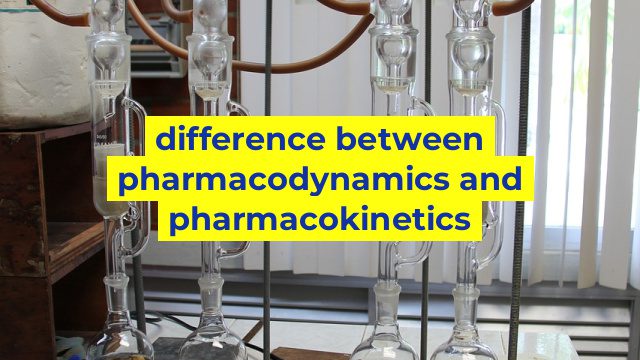The Difference Between Pharmacodynamics and Pharmacokinetics in Pharmacology
Pharmacology is the branch of medicine that deals with the study of how drugs interact with living organisms to produce a therapeutic or biologic response. There are two important concepts in pharmacology that are crucial to understanding the effects of drugs on the human body: pharmacodynamics and pharmacokinetics.
Pharmacodynamics
Pharmacodynamics is the study of the biological and physiological effects of drugs on the body. It is concerned with how drugs interact with cellular receptors and molecular targets to produce their pharmacologic effects. In other words, pharmacodynamics deals with the mechanisms of drug action, including how drugs bind to receptors and how they affect biochemical pathways, intracellular signaling cascades, and gene expression.
Pharmacodynamics also encompasses the concept of dose-response, which is the relationship between the dose or concentration of a drug and the magnitude of the pharmacologic effect. It is important to note that pharmacodynamics is not the same as pharmacokinetics.
Pharmacokinetics
Pharmacokinetics is the study of the absorption, distribution, metabolism, and excretion (ADME) of drugs in the body. It is concerned with the time course and magnitude of drug exposure in the body, and how these factors influence drug efficacy and toxicity. In other words, pharmacokinetics deals with the fate of drugs in the body, including how they are absorbed, distributed to target tissues, metabolized, and eliminated.
Pharmacokinetics also encompasses the concepts of bioavailability, which is the fraction of the administered dose that reaches the systemic circulation, and clearance, which is the rate at which a drug is eliminated from the body. It is important to note that pharmacokinetics is not the same as pharmacodynamics.
The Importance of Understanding the Difference
Understanding the differences between pharmacodynamics and pharmacokinetics is crucial in pharmacology because it helps researchers and clinicians optimize drug therapy for individual patients. By understanding the pharmacokinetic and pharmacodynamic properties of a drug, clinicians can tailor the drug dosage and administration regimen to achieve the desired therapeutic effect while minimizing the risk of adverse drug reactions.
In conclusion, pharmacodynamics and pharmacokinetics are two important concepts in pharmacology that are complementary but distinct. Pharmacodynamics deals with the biological and physiological effects of drugs on the body, while pharmacokinetics deals with the absorption, distribution, metabolism, and excretion of drugs in the body. Understanding the differences between these two concepts is crucial in optimizing drug therapy for individual patients.
Table difference between pharmacodynamics and pharmacokinetics
| Pharmacodynamics | Pharmacokinetics |
|---|---|
| Refers to the effect of drugs on the body and how the body responds to them. | Refers to the processes that determine the concentration of drugs in the body over time, such as absorption, distribution, metabolism, and excretion. |
| Describes how drugs interact with their target receptors or enzymes to produce a therapeutic effect or adverse reaction. | Describes how drugs are absorbed into the bloodstream, distributed to their site of action, metabolized by enzymes, and eliminated from the body. |
| Includes studies of drug receptors, signal transduction pathways, and dose-response relationships. | Includes studies of drug absorption, bioavailability, volume of distribution, clearance, and half-life. |
| Is concerned with the qualitative and quantitative aspects of drug effects, such as potency, efficacy, and toxicity. | Is concerned with the factors that affect drug concentrations and how they change over time, such as routes of administration, drug interactions, and patient factors. |
| Is important for understanding the mechanism of action of drugs and how they can be optimized for therapeutic benefit. | Is important for determining the appropriate dosing regimen of drugs and minimizing the risk of adverse effects. |

